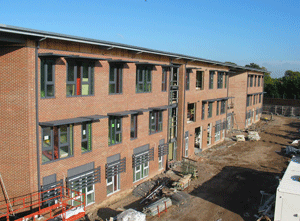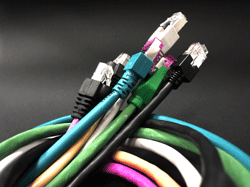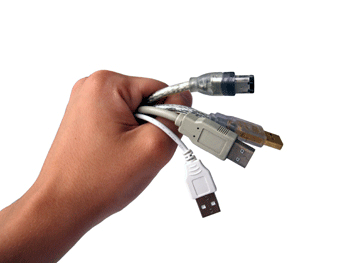Office supply company Frillo has today launched a new online marketplace specifically designed for schools, academies and other public sector organisations. The Hull-based organisation’s Education Store, which is linked to Frillo’s online store for private sector businesses, provides public sector procurement specialists with a second-to-none choice of EU compliant products. This range includes IT equipment such as iPad and laptops as well as books and stationary supplies. All with no mark-up, meaning greater value for money.

The rising costs of key staples, such as food and energy, are continuing to have an impact on schools across the country, as business managers, bursars and senior leadership teams look to control their budget for the second half of the academic year.
What can schools do in order to be smarter when purchasing food items? And, importantly, how to do it without impacting on availability, quality, nutritional standards or exceeding budgets?
Below are some practical tips that school leadership teams can consider:

It is not often that I hear news of a new directive from the European Commission that I can get excited about. Frequently, new rules from the EU are loaded with lots of administration or additional layers of red tape that seem more of burden than a benefit. But talking with legal expert Paul Henty recently, he told me of a new legislation that is set to come into force by 2016, affecting the way in which invoicing is managed in contracts governed by EU procurement directives.
In summary, the European Commission has published a draft directive for the creation of a ‘standardised e-invoicing system’. What this means is that public sector bodies will stop receiving paper invoices and instead receive electronic invoices. It is also part of a wider movement to create fully digital public procurement processes by 2020.

How can we commission services better in our school? This article explains the commissioning cycle, passes on tips on effective commissioning, and links to the Commissioning Support Programme and DfE guidance.
The Commissioning Support Programme (CSP) defines strategic commissioning as follows:
Commissioning is the process for deciding how to use the total resource available for children, young people, parents and carers in order to improve outcomes in the most efficient, effective, equitable and sustainable way.

I know that we were one of the lucky ones who avoided the cull of Building Schools for the Future because our building work had started and contracts signed. The next wave of Liverpool schools, who had worked so hard on their plans and buildings, were left bereft and cast covetous glances at we five schools who continued their build. They joined with the LA and local business men to attempt a rescue package and have, fingers crossed, united with a design and building company to re-build certain schools all with the same air-hangar infra-structure. And as this progresses, they are more and more looking for advice from our wave of schools to avoid the mistakes made: the stress and the anger; the feeling of the loss of independence and control; contracts signed because of emotional blackmail and brinkmanship. All of these so much a part of our collective experience.

When a school district adopts a 1:1 technology programme, no matter whether the district itself is purchasing the computers or is instead asking the students and their families to purchase a device (or bring one from home), one of the critical concerns that arises is how to keep those devices safe and operational for years to come. Theft, devices being lost, and devices breaking (by being dropped, for example) are all legitimate concerns. While some of these issues can be prevented or reduced somewhat by teaching students some basic safety techniques (such as keeping devices safely locked up when unattended), districts should also plan on purchasing insurance to protect their investment in 1:1 technology. Here are two key reasons why school districts should elect to insure students’ technology devices, along with some thoughts about what parents can do if their child’s school does not insure 1:1 devices.

As an SEN teacher ICT plays an important part in our day to day activities. Think how many ICT based solutions are used every day – many of our students arrive by taxi which is all arranged by your School Management System. You may use an electronic attendance register and monitor your premises by CCTV. Your SEN pupils will have behaviour plans and IEPs generated with a click of the mouse. Your pupils will learn Numeracy and Literacy skills, even at P Levels, using a PC adapted with alternate pointing devices and viewing devices. Where does all this stuff come from? Many teachers inherit a classroom with all these things that have quite obviously been in place for years.
Imagine just how much one aspect of IT has developed in the time that your resources have been used. It’s probably fair to say some of that kit entered your classroom when the Internet was in it’s infancy used by a select few whereas now it’s in every home and most of us use it every day for all manner of life's tasks.

The purpose of this piece is to give you some background not only to my own personal experience, but to inform and instruct on the installation process behind Wi-Fi deployment in schools. I have attempted to keep the technical terminology to a minimum. Partly for the benefit of the reader, but mainly for my own benefit!
WLAN: a Wireless Local Area Network that uses high frequency radio signals to transmit and receive data over distances of a few hundred feet; commonly known as, or called Wi-Fi.
802.11N: the unnecessarily complicated way of explaining the type of connection speed. (The important bit being the ‘N’).

Due to my exceptional mathematical prowess during the very early years at school, I was occasionally given the exalted and coveted pleasure of being allowed to play a maths game on the schools one and only computer! It was a brown BBC, more affectionately known as the “BEEB”. It sat in the library, and received longing looks by every pupil that happened to walk past. Anyone who remembers these BEEBS will now be thinking about the advancements in ICT, and how far we have come technologically in the last 20 years.
Unless future proofing is considered when purchasing ICT, a school may as well cash out the annual ICT budget, and throw it into the boys’ urinal on the first corridor. The constantly changing nature of ICT is very nearly its downfall. This simple fact must be embraced before any purchase order is signed relating to ICT.

A community-driven platform for showcasing the latest innovations and voices in schools
Pioneer House
North Road
Ellesmere Port
CH65 1AD
United Kingdom